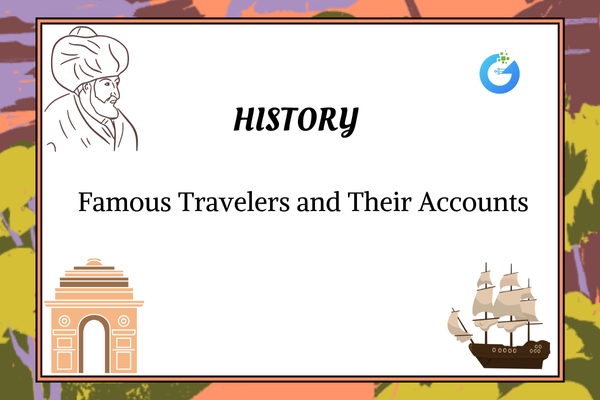Introduction – Why Was Trade Important in Medieval India?
In medieval times, trade wasn’t just about buying and selling goods—it was about connecting people, ideas, and cultures. India, with its rich spices, textiles, and precious stones, became a central hub in global trade routes. From land caravans to sea voyages, Indian traders reached far-off lands, and in return, foreign goods and ideas flowed into the subcontinent. Trade made kingdoms richer, cities busier, and people more connected to the world around them.
Trade also helped in the rise of powerful kingdoms and port towns. As merchants grew wealthier, they contributed to the building of temples, schools, and public utilities, helping societies flourish.
expert-led History classes – visit our website to learn more
What Did India Trade?
India was famous for its luxury goods. Traders exported spices like black pepper, cardamom, cinnamon, and textiles like silk, cotton, and muslin. Other valuable items included ivory, pearls, sandalwood, and indigo dye. These were in high demand in the Middle East, Europe, and Southeast Asia because of their superior quality.
In return, India imported horses (especially from Central Asia), glassware, dates, silk from China, and precious metals like gold and silver. These goods enriched Indian markets and helped in enhancing craftsmanship, especially in jewelry, weapon-making, and decorative items.
How Did Trade Happen?
Trade was carried out via land routes and sea routes. Land caravans used the Silk Road, passing through Central Asia and Persia, while others navigated the Himalayan passes to reach Tibet and China. Sea traders sailed from ports like Calicut, Surat, Masulipatnam, and Cambay, crossing the Arabian Sea and the Bay of Bengal.
Indian traders built strong maritime networks. Ships carried goods to East Africa, Arabia, Sri Lanka, and Southeast Asia. Arab and Persian traders acted as intermediaries, helping Indian goods reach Europe long before direct European presence in India.
Major Trade Cities – Where Was the Action?
Cities like Calicut (Kozhikode), Surat, Delhi, Agra, and Hampi emerged as vibrant trade hubs. These cities developed bazaar systems with designated market zones for different goods, inns for traveling merchants, and storage houses.
Hampi, the capital of the Vijayanagara Empire, was a magnificent city known for its planned markets and global trade links. Surat became a major port for export-import, while Delhi and Agra prospered under the Mughals due to their political importance and trade-friendly policies.
Role of Rulers – Who Promoted Trade?
Many Indian rulers actively promoted trade. They understood its power in bringing wealth and global recognition. Rulers like the Mughals, Cholas, and Vijayanagara kings built roads, bridges, ports, and rest houses (sarais) to support safe and efficient trade.
They also introduced customs offices, trade guilds, and gave tax exemptions to skilled artisans and foreign traders. Some rulers even maintained navies to protect their merchants on the seas and established diplomatic missions to foster foreign trade ties.
Trade and Culture – How Did It Affect Society?
Trade didn’t just bring wealth—it brought new cultures, foods, and religions. Arab traders introduced Islam, while Indian ideas like Buddhism traveled eastward through merchants and monks. The exchange of languages led to the creation of blended dialects in port cities.
Even daily life was transformed—Indian food got a spicy boost from ingredients like chillies and tomatoes, brought by Portuguese traders. Clothing styles, music instruments, and even architectural designs began to reflect foreign influences.
Fun Fact
The spice trade was so profitable that it drew major European powers to India. The Portuguese arrived first, followed by the Dutch, British, and French. What started as trade partnerships slowly turned into colonial domination. These traders initially came for pepper and cloves, but stayed to rule empires.
Summary Table –
| Aspect | Details |
| Key Goods Exported | Spices, textiles, gems, ivory, indigo, perfumes |
| Goods Imported | Horses, silk, dates, glassware, metals |
| Major Trade Routes | Land (Silk Road), Sea (Arabian Sea, Bay of Bengal) |
| Important Ports | Calicut, Surat, Cambay, Masulipatnam |
| Famous Cities | Hampi, Delhi, Agra, Patan, Kochi |
| Role of Rulers | Built infrastructure, protected traders, gave tax benefits |
| Cultural Influence | Spread of religion, language, new foods, artistic exchange |
Conclusion – Trade as a Bridge Between Civilizations
India’s medieval trade was a powerful force that connected it to the world. Through spices and silks, horses and coins, stories and scriptures—India exchanged not only goods but also knowledge and culture. Trade made cities flourish, brought people together, and shaped history in ways that are still felt today. It was more than business—it was a journey of discovery.
This long history of trade laid the foundation for India’s rich multicultural society and global interactions. Even today, the echoes of these ancient trade networks can be seen in our food, languages, and traditions.








